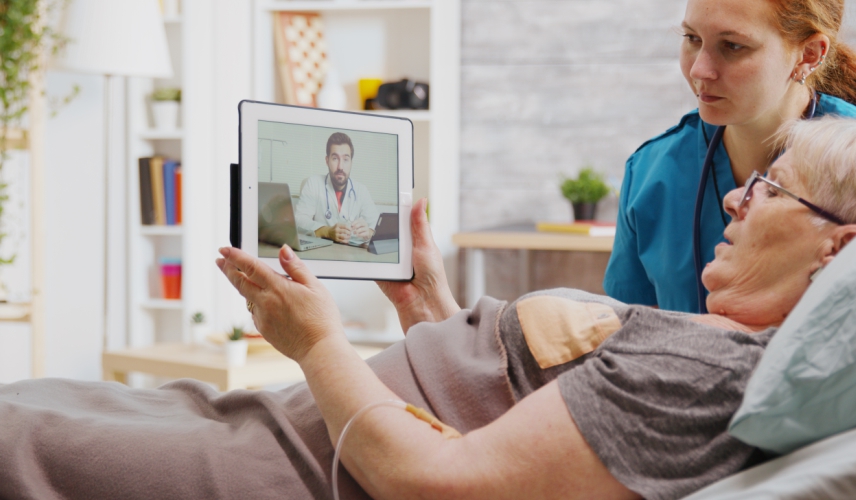Telehealth – What and the How
Telehealth is the method for delivery of health care services remotely without the need for patients and doctors to be in the same room facing each other. These services include ambulatory care, preventive health, teleradiology, patient education, health information, home care and remote patient monitoring aided through digital technologies.
Benefits of Telehealth for Doctors & Patients
TeleHealth brings different technologies and functionalities together to help the clinicians as well the patients to have the needed care delivered. Some features like 3-way audio calls and tele scheduling improve overall experience and efficiency of the care cycle.
- Audio Video Consults:
With the help of digital mobile and desktop applications Telehealth facilitates two-way or three-way communications where the patient, attending physician and caregiver/relatives are brought together to make informed decisions on care protocols. This helps to effectively manage clinicians’ time and patients can save their travel and waiting times.
- Integrated mobility:
With everyone having access to smartphones and hospitals having digital planning tools, telehealth has made workflow management such as appointment scheduling, patient health information sharing, security and payment access a breeze. With access to connectivity getting better, highly contagious diseases disrupting the normal way of care delivery the use of mobile-based healthcare has increased in the last few years.
- Store and Forward Technologies:
These tools help in storing and accessing images and reports easily. Teleradiology and Telepathology Services have been very productive and successful in the past decade, with great results in accuracy due to telecollaboration and reduction in reporting times (TAT).
- Remote Monitoring:
Tele ICU and home health monitoring devices help in better management of chronic diseases as well as in long-term therapy. Today, many devices and platforms can connect the patient, caregiver and physician with alerts and early warnings which helps in timely interventions.
When it comes to healthcare, there are myriad ways of doing device connectivity which leads to information exchange challenges and adaptability issues. However, there has been a good attempt to bring standardization in the integration which is addressing these concerns very effectively.
Interoperability and Standards:
With interoperability, one can seamlessly integrate multiple devices and systems to collate patient data and execute many services via informed decision support tools. Standardization of processes and protocols has garnered strong backing and is well set to be a force soon. Some standards already in existence are the DICOM formats, HL7 and FHIR integration standards, HIPAA compliances, ICD -10 and SNOWMED- CT nomenclatures.
Trends to watch in telehealth.
Uberization of Healthcare providers and marketplace for Health and Wellness:
There are companies attempting to play the aggregator role where all the free-lancing General Physicians, Pediatricians, and Dieticians’ availability is captured centrally. With GPS and geofencing abilities, patients can access the right specialists around one’s vicinity without traveling. This form of telehealth is gaining speed and can challenge the typical brick-and-mortar facilities that insist on F2F meetings. Also, the digital world has opened a marketplace for pharmaceuticals, wellness products as well as ancillary services which completes the telehealth ecosystem. The digital care delivery is further enhanced by the online accessibility of dieticians, physiotherapists, counselors, alternative medicine practitioners and fitness coaches, etc.
Predictive analysis With technologies like BlockChain, AI and ML we are looking at predictive analysis to avert crises. The current pandemic of Covid-19 has been a great example of using data and implementing strategies for the safety of the public. The future of technology in healthcare is slowly shifting to computer-aided decision support systems which eliminate risk. Telehealth can provide ready to analyze data for this kind of analysis.
Wearables and the world beyond: The progress one has seen in this space over the last few years is remarkable. With connected care and monitoring, we can detect and prevent disease or disasters. Watches, rings, necklaces, clothes, nanobots, etc. are used and have shown various degrees of success in the current market.
The Soft link Telehealth Platform helps healthcare providers establish standardized care delivery through a seamless workflow process. We can customize our solution to suit your current requirements and address new developments in digital care delivery.
For further information, contact info@softlinkinternational.com or do leave your contact details and we will reach out to you at the earliest.

